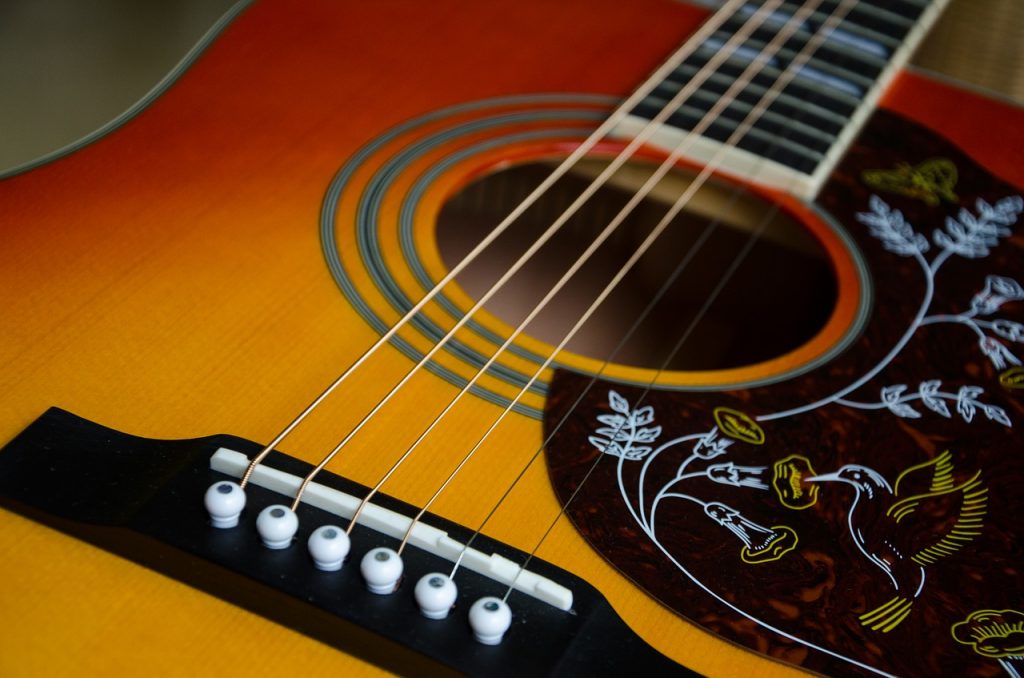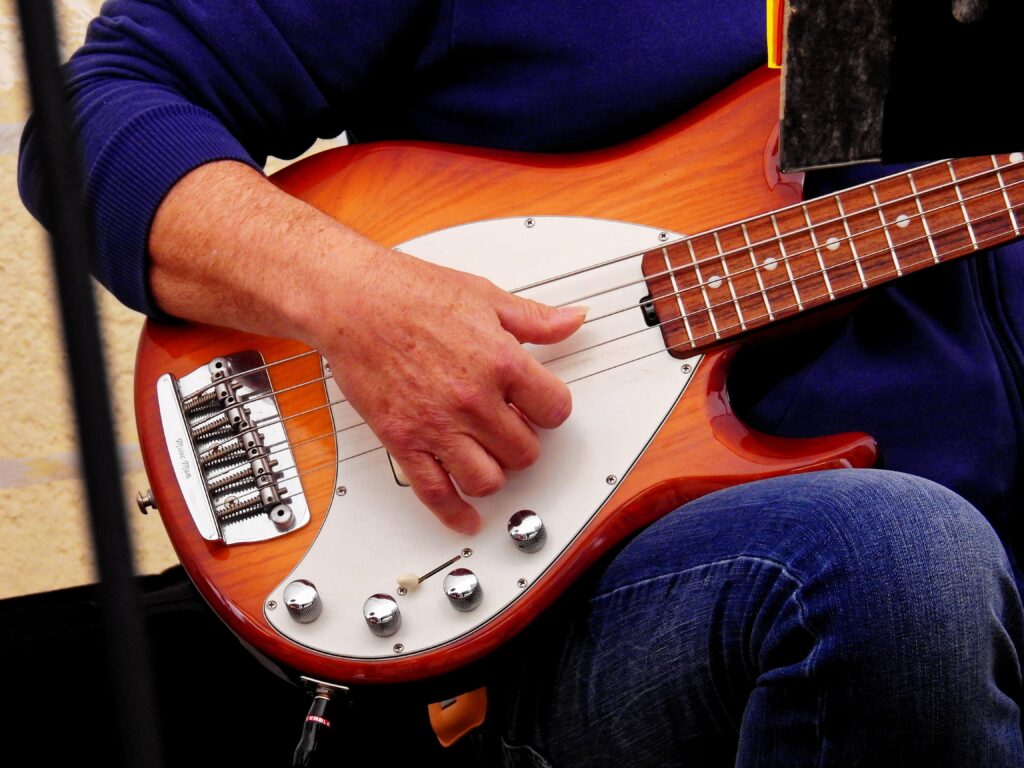What is the hole in a guitar called? This is not a question that most people think to ask, but it is an interesting one.
The hole in a guitar plays an important role in the instrument’s sound. It is also a necessary part of the construction of the guitar.
Read on to learn more about what the hole in a guitar is called and what its purpose is.
What Is The Hole In A Guitar Called?
The hole in a guitar is called the soundhole. It is located in the middle of the instrument, between the neck and the body. The purpose of the soundhole is to allow air to flow in and out of the guitar. This airflow creates the sound that we hear when we play the guitar.
The soundhole is also important for the construction of the guitar. It helps hold the instrument together and to keep it in shape.
The name “sound hole” is a bit of a misnomer. The soundhole does not produce any sound itself. The sound that we hear when we play the guitar comes from the vibrations of the strings. These vibrations are amplified by the guitar’s body and projected out through the soundhole.
The sound hole is an important part of the guitar, but it is not the only thing that contributes to the instrument’s sound. The type of wood that the guitar is made from, the size of the body, and the shape of the neck all play a role in the sound of the guitar.
Why are guitar holes round?
The shape of the guitar’s soundhole is incredibly important to the overall tonal quality and projection of the instrument.
Traditionally, guitars feature round soundholes to create a more focused sonic output. This shape helps to reduce any unwanted air leakage which can cause the tone to become muffled or muddy.
Round soundholes also help to increase sustain by allowing air inside of the body cavity to resonate with the vibrations of the strings.
As these vibrations interact with each other, they cause a slight delay in decay time – this creates a fuller, richer tone which is highly desirable for guitarists playing solo or lead parts.
Finally, it should be noted that some acoustic guitars have been designed with oval-shaped soundholes as opposed to round; this shape provides slightly different tonal characteristics depending on where it is positioned within the body cavity.
How does the sound hole help you hear the sound of the guitar?
The soundhole of a guitar allows the sound produced by the strings and body to be amplified naturally. The shape of the soundhole helps to direct the vibrations from the strings and body in a single direction, allowing for greater volume and clarity. This is why round soundholes are preferred over other shapes: they provide better focus and projection of sound waves.
The sound hole also serves to increase sustain by amplifying air resonating within the body cavity. When these vibrations interact with each other, they create a slight delay in decay time which results in a fuller, richer tone.
Additionally, changes in air pressure inside the guitar’s body can cause sympathetic vibration which adds further depth and resonance when playing notes at higher volumes.
Moreover, the shape and size of the hole also play a key role in determining how loud it can be heard. Generally speaking, larger holes will produce louder tones because more air can move freely through them, whereas smaller ones will create less volume due to their restricted size.
Overall, the sound hole of a guitar helps amplify the audio output from its strings and body cavity for greater volume, clarity, sustain, and resonance.
What happens when the soundhole is covered on a guitar?
When the sound hole of a guitar is covered, the tone of the instrument can be drastically altered. This is because when the sound hole is blocked, the vibrations from the strings and body cavity are unable to escape. Therefore, no additional volume or resonance will be heard from outside of the instrument.
In this situation, much of the acoustic projection that would otherwise be heard if the sound hole was uncovered is lost. The lack of air circulation inside the guitar also affects its ability to sustain notes and chords for longer periods. This can lead to an overall dryer and less responsive tone compared to when it has an open soundhole.
Another thing to consider when covering a guitar’s soundhole is that unseen changes may occur to maintain its structural integrity.
To compensate for the lack of air pressure within its body cavity, some guitars may have extra braces added underneath their bridge or around their soundboard to prevent any warping or distortion occurring over time due to reduced airflow.
Does it matter where the hole is in a guitar?
The exact positioning of a guitar’s soundhole is important regarding its overall tone and projection.
Generally speaking, the soundhole should be located opposite the bridge so that the vibrations from strings and the body can be effectively projected outward.
Some acoustic guitars also feature different shapes for their soundholes such as oval or rectangular, which can help create unique tonal characteristics depending on where it is placed within the guitar’s body cavity.
Additionally, some players may opt for offset soundholes to achieve a better balance between treble and bass frequencies when strumming chords at higher volumes.
Overall, careful consideration should always be taken into account when deciding where to place a guitar’s soundhole; its shape and positioning will ultimately determine how well the instrument projects sound and resonates with other instruments in an ensemble.
What guitar has no hole?
The most common type of guitar that has no soundhole is the electric guitar. Despite lacking an opening, electric guitars still produce sound through pickups that detect and amplify vibrations from the strings.
The lack of a soundhole means electric guitars tend to be quieter compared to acoustic models, but this can be easily remedied by turning up the amp or using effects pedals.
Another type of guitar that doesn’t feature a soundhole is one with a solid body – such as some basses and archtop models. These instruments are typically made from one large slab of wood (rather than having separate pieces glued together) and rely on electronics for their amplified tone.
In both cases, these designs allow for greater stability regarding vibration and air leakage, resulting in a more consistent tone. Additionally, solid-body guitars are often preferred by players who want to achieve heavier or distorted sounds which would otherwise be difficult with an acoustic instrument.
What Are F-Holes?
The f-holes on a guitar are another important part of the instrument’s sound. They are located on the top of the guitar, between the neck and the body. The f-holes are what give a guitar its distinctive sound.
The f-holes are named after they resemble the letter “F.” They are shaped like a teardrop, and they have a small hole in the center. The f-holes allow air to flow in and out of the guitar, just like the soundhole.
The f-holes are not as important as the soundhole, but they play an important role in the sound of the guitar. The air that flows through the f-holes creates vibrations that contribute to the overall sound of the guitar.
The f-holes also affect the way that the guitar looks. They are usually finished with a varnish or lacquer, and they can be decorated with inlays or other designs.
What Is The Difference Between A Sound Hole And An F-Hole?
The main difference between a sound hole and an f-hole is their location on the guitar. The soundhole is located on the front of the guitar, while the f-holes are located on the top.
The soundhole is also larger than the f-holes. The soundhole allows air to flow in and out of the guitar, while the f-holes only allow air to flow out.
The location of the soundhole and the f-holes affects the sound of the guitar. The sound hole is what allows the guitar to be heard by people nearby, while the f-holes contribute to the overall sound of the guitar.
How do you clean guitar holes?
It can be easy to forget about the small parts of a guitar, such as its soundhole when cleaning and maintaining it. However, this is an important step in preserving its longevity and performance.
The best way to clean a guitar’s soundhole is by using a soft cloth dampened with cold water (or suggesting an alternative cleaner like rubbing alcohol). Over time, dust particles and dirt may accumulate on the inner surface which can affect the quality of sound produced.
When cleaning the hole, be sure to move the cloth in circular motions – this will help remove any debris without damaging the delicate wood or finish around it. Once completed, use a dry cloth to wipe away any remaining moisture.
For stubborn or sticky residue, a small brush can also be used to scrape away any unwanted particles without damaging the wood. If necessary, use a mild detergent on the cloth to help break down caked-on dirt.
| Question | Answer |
|---|---|
| Can you use any cleaning products? | While there are specialized guitar cleaning products available, it is best to avoid using any harsh chemicals or abrasive materials that could damage the finish or the wood of the guitar. |
| How often should you clean the soundhole? | It is recommended to clean your guitar’s soundhole regularly, especially if you play frequently or notice a buildup of debris. How often you should clean depends on how often you play and the environment in which you play. |
| What tools do you need for cleaning a guitar soundhole? | You will need a soft bristle brush, compressed air, a lint-free cloth, and a guitar cleaner (optional). |
| Is it necessary to remove the strings to clean the soundhole? | It is not necessary to remove the strings to clean the soundhole, but it may be helpful to loosen them slightly to make it easier to access the soundhole. |
Bottom Line
So, what is the hole in a guitar called? The hole in a guitar is typically called the soundhole. This is where the sound from the strings vibrates and resonates, making the tone of the guitar. Sound holes are not to be confused with the f-holes, which are located on the top of the guitar body and contribute to the look and sound of the instrument.





